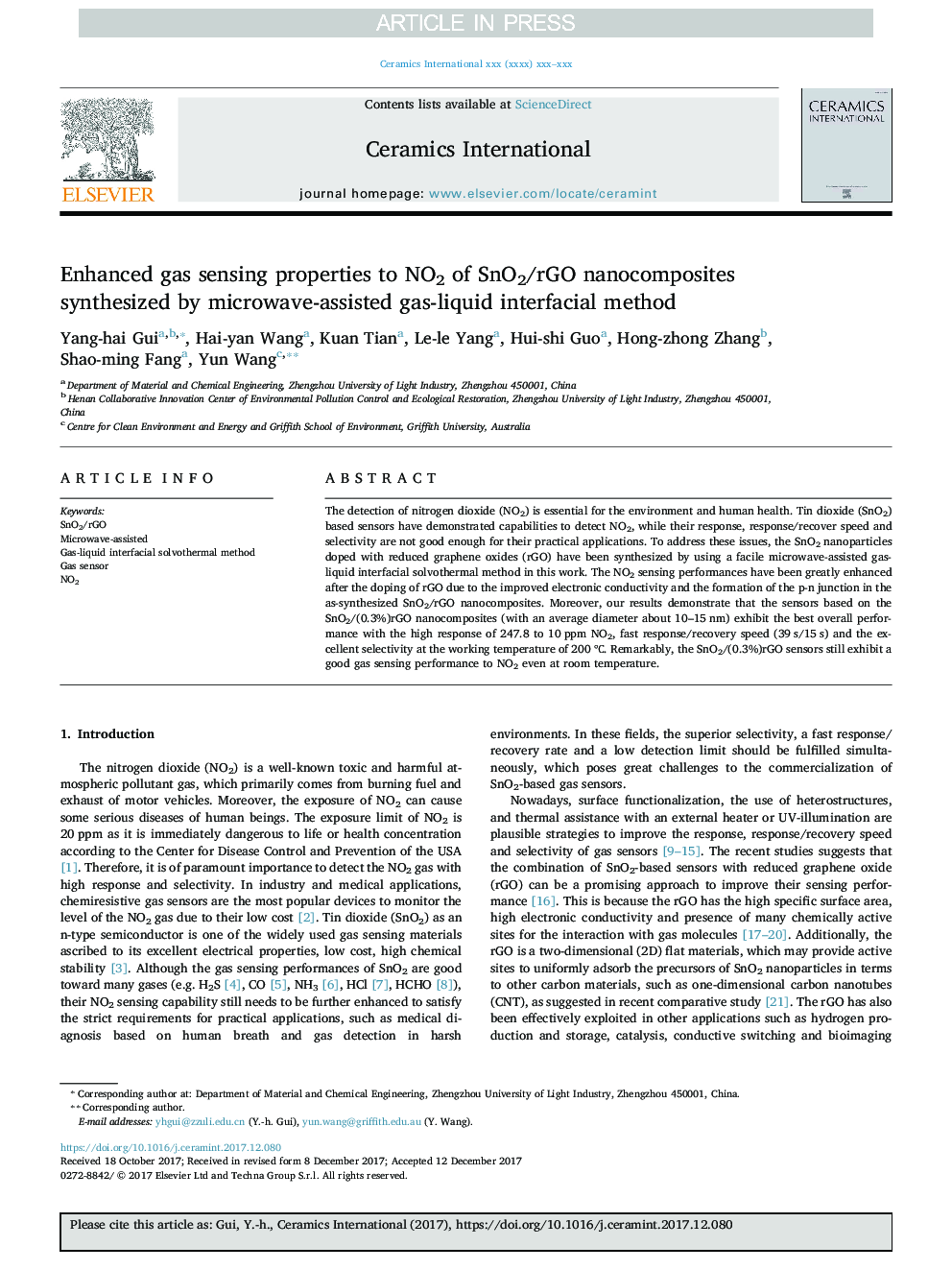| Article ID | Journal | Published Year | Pages | File Type |
|---|---|---|---|---|
| 7888199 | Ceramics International | 2018 | 8 Pages |
Abstract
The detection of nitrogen dioxide (NO2) is essential for the environment and human health. Tin dioxide (SnO2) based sensors have demonstrated capabilities to detect NO2, while their response, response/recover speed and selectivity are not good enough for their practical applications. To address these issues, the SnO2 nanoparticles doped with reduced graphene oxides (rGO) have been synthesized by using a facile microwave-assisted gas-liquid interfacial solvothermal method in this work. The NO2 sensing performances have been greatly enhanced after the doping of rGO due to the improved electronic conductivity and the formation of the p-n junction in the as-synthesized SnO2/rGO nanocomposites. Moreover, our results demonstrate that the sensors based on the SnO2/(0.3%)rGO nanocomposites (with an average diameter about 10-15Â nm) exhibit the best overall performance with the high response of 247.8 to 10Â ppm NO2, fast response/recovery speed (39Â s/15Â s) and the excellent selectivity at the working temperature of 200Â â. Remarkably, the SnO2/(0.3%)rGO sensors still exhibit a good gas sensing performance to NO2 even at room temperature.
Keywords
Related Topics
Physical Sciences and Engineering
Materials Science
Ceramics and Composites
Authors
Yang-hai Gui, Hai-yan Wang, Kuan Tian, Le-le Yang, Hui-shi Guo, Hong-zhong Zhang, Shao-ming Fang, Yun Wang,
